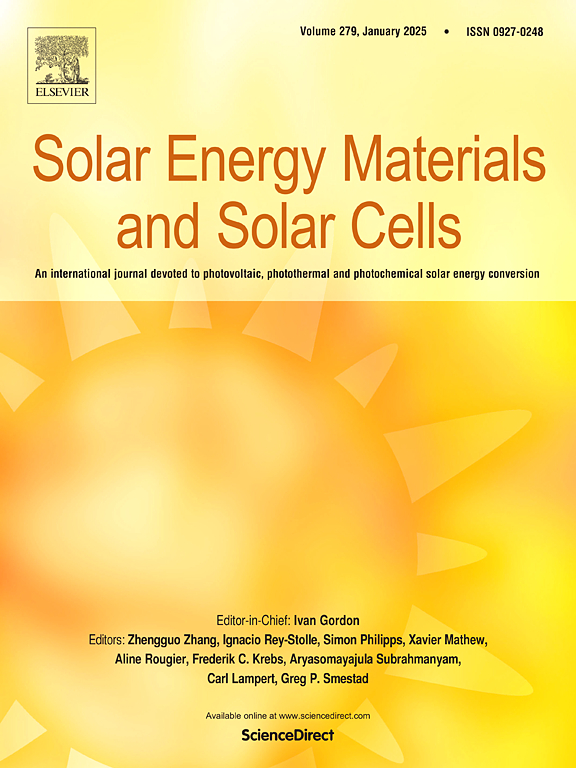Solar power generation performance of MoO2/Mo4O11 photothermal nanomaterials
IF 6.3
2区 材料科学
Q2 ENERGY & FUELS
引用次数: 0
Abstract
The two-phase MoO2/Mo4O11 NPs were prepared by dry reduction of MoO3 NPs, which are highly regarded for their excellent solar photovoltaic conversion performance and excellent thermal stability. The materials were tested and found to have less than 10 % reflectance and up to more than 95 % absorption in the range of 200–2500 nm of the AM1.5 global standard solar spectrum. The two-phase MoO2/Mo4O11 NPs rapidly warmed up from room temperature to the maximum equilibrium temperature of 50 °C in 20 s under one solar light intensity. And no photothermal degradation occurred under five photothermal cycle tests. The two-phase MoO2/Mo4O11 NPs were combined with the temperature difference power generation technology to construct a photothermal power generation device. Under a standard sunlight intensity, the voltage can reach 0.27 V, and the maximum voltage that can be achieved in the photothermal power generation cycle test is almost the same.
MoO2/Mo4O11光热纳米材料的太阳能发电性能
通过对MoO3 NPs的干还原制备了两相MoO2/Mo4O11 NPs, MoO3 NPs具有优异的太阳能光伏转换性能和优异的热稳定性。对这些材料进行了测试,发现在AM1.5全球标准太阳光谱的200 - 2500nm范围内,反射率小于10%,吸收率高达95%以上。在一个太阳光照强度下,两相MoO2/Mo4O11 NPs在20 s内从室温快速升温到最高平衡温度50℃。5次光热循环试验均未发生光热降解。将两相MoO2/Mo4O11 NPs与温差发电技术相结合,构建光热发电装置。在一个标准的阳光强度下,电压可以达到0.27 V,与光热发电循环试验中所能达到的最大电压几乎相同。
本文章由计算机程序翻译,如有差异,请以英文原文为准。
求助全文
约1分钟内获得全文
求助全文
来源期刊

Solar Energy Materials and Solar Cells
工程技术-材料科学:综合
CiteScore
12.60
自引率
11.60%
发文量
513
审稿时长
47 days
期刊介绍:
Solar Energy Materials & Solar Cells is intended as a vehicle for the dissemination of research results on materials science and technology related to photovoltaic, photothermal and photoelectrochemical solar energy conversion. Materials science is taken in the broadest possible sense and encompasses physics, chemistry, optics, materials fabrication and analysis for all types of materials.
 求助内容:
求助内容: 应助结果提醒方式:
应助结果提醒方式:


